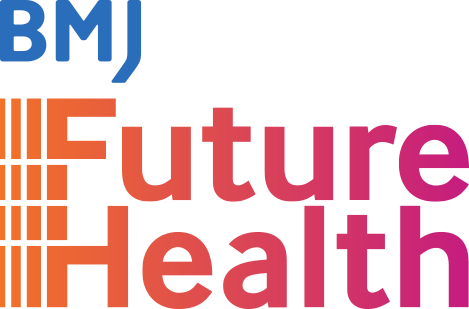Why good data are fundamental to equity, trust and transformational change in healthcare
In today’s rapidly evolving healthcare landscape, data is not just a tool but a critical foundation for driving equitable, trustworthy, and transformational change. This webinar explores the essential role that high-quality data plays in creating a strong foundation for impactful real-world innovations, while also addressing the challenges and obstacles in effectively collecting, sharing, and utilizing health data at population level.
Experts:
Jessica Morley, Postdoctoral Research Associate, Digital Ethics Center (DEC), Yale University
Joe Zhang, Head of Data Science for the London AI Centre and Secure Data Environment (SDE) programme
Summary of the webinar:
This BMJ Future Health webinar, hosted by Helen Surana, explored the fundamental role of data in equity, trust, and healthcare transformation. The session was led by Jess Morley and Joe Zhang, who discussed policy perspectives, technical challenges, ethical concerns, and potential solutions for leveraging health data effectively.
Key Themes and Takeaways
1. Why Health Data Matters for Transformational Change
- Healthcare is facing systemic crises: increasingly complex patients, rising treatment costs, and diminishing returns in patient outcomes.
- COVID-19 exacerbated these challenges, adding strain to healthcare systems.
- There is a policy-driven belief that data and AI can improve healthcare by:
- Predicting disease onset and intervening earlier.
- Personalizing treatment to enhance effectiveness.
- Shifting towards predictive, preventative, and participatory medicine (engaging patients through wearables and self-monitoring).
- However, achieving these goals simultaneously (improving population health, enhancing patient experience, and reducing costs) may be unrealistic.
2. Challenges in Leveraging Health Data
- NHS data is fragmented, with over 60,000 data flows mapped from providers to external organizations.
- Transparency issues: Patients and providers struggle to track where data goes and how it’s used.
- Data is already widely distributed:
- Large amounts sit outside the NHS with data brokers and private organizations.
- Secondary use of data (e.g., for research, AI development) is challenging due to accessibility and governance issues.
- Secure data environments aim to centralize data use, but most valuable patient data remains locked within local healthcare systems.
3. Structural Barriers to High-Quality Health Data
- Different types of healthcare data have different challenges:
- Primary care data: Structured clinical codes exist, but free-text GP notes are largely inaccessible.
- Social care and community health data: Underrepresented in digital records, limiting visibility into broader patient care.
- Hospital data: Over 100 different electronic health record (EHR) systems, often incompatible and difficult to extract insights from.
- Manual data entry and coding lead to inefficiencies**:
- Clinicians input free-text notes, which cannot easily be analyzed for research.
- Manual coding for payments and audits introduces bias and inconsistencies in data representation.
- Bias and inequities in data quality:
- Patients from deprived backgrounds or ethnic minorities often have less complete or lower-quality data records.
- AI models trained on biased data risk perpetuating health inequalities.
4. Predictive Analytics and AI: Challenges in Real-World Implementation
- AI-driven risk prediction models (e.g., hospital admission risk, sepsis detection) have shown poor real-world performance:
- Risk stratification models increase GP workload but do not significantly improve patient outcomes.
- AI models trained on historical structured data struggle to adapt to evolving healthcare practices.
- Many algorithms trained on US datasets do not translate well to UK healthcare due to coding and system differences.
- Real-world validation of AI models is lacking:
- The Epic Sepsis Model, widely deployed in US hospitals, performed worse than random guessing in some evaluations.
- Algorithm performance degrades over time (data drift), requiring continuous retraining and adaptation.
5. Ethical and Systemic Risks in Data-Driven Healthcare
- Transformation must be carefully managed to prevent negative consequences:
- Healthcare decisions are increasingly based on “digital twins” (data profiles) rather than direct patient interactions.
- Trust and accountability are eroding as more private entities intervene in clinical decision-making.
- The lack of governance in AI-driven healthcare raises concerns about bias, transparency, and patient consent.
- The risk of a two-tiered system:
- “Worried well” individuals with rich data profiles may receive better, more tailored healthcare.
- Marginalized populations with incomplete records could face neglect or misdiagnosis.
- This creates an “inverse data quality law”—where those with greater healthcare needs have the poorest data representation.
6. The Role of EHR Vendors and Regulatory Challenges
- EHR vendors (e.g., Epic, TPP, EMIS) wield significant control over data access, clinical workflows, and interoperability.
- Lack of standardization and regulatory oversight limits NHS control over its own data.
- EHR systems are not classified as medical devices, meaning they escape rigorous regulation despite their impact on patient care.
- Data access fees: NHS institutions often pay high costs to retrieve their own data from proprietary systems.
7. Moving Forward: Solutions for Ethical and Equitable Data Use
- Recognize health data as a social determinant of health:
- Poor data representation directly impacts health equity.
- AI and digital health should be treated as public health interventions, not just technical solutions.
- Shift from “data-driven” to “outcome-driven” approaches:
- Define clear health objectives first, then determine what data is needed—rather than blindly collecting more data.
- Improve governance and accountability:
- Enhance transparency in data ownership, usage, and AI decision-making.
- Establish clear ethical frameworks for predictive analytics.
- Invest in foundational infrastructure at the local level:
- Better hospital and GP data systems will yield higher-quality, actionable insights.
- Move beyond top-down solutions—focus on bottom-up improvements in clinical data capture.
- Foster cross-sector collaboration:
- Academics, clinicians, policymakers, and patients should co-design fair and inclusive data strategies.
Final Thoughts
- Data has transformative potential in healthcare, but only if managed responsibly.
- Ethical, technical, and governance challenges must be addressed to prevent bias and inequities.
- More transparency, clinician involvement, and regulatory oversight are essential to align AI-driven healthcare with public interest.


